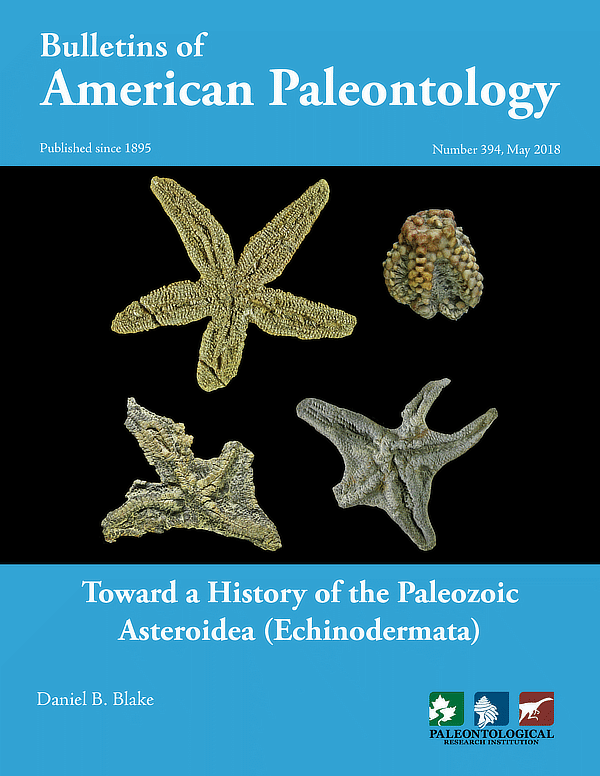Toward a history of the Paleozoic Asteroidea (Echinodermata)
Existing taxonomic and evolutionary interpretations of stem-group (Paleozoic) Asteroidea differ significantly. Molecular methodologies are unavailable, and because of a fossil record consisting largely of incomplete specimens, comprehensive morphology-based phylogenetic treatments yield equivocal results. Because of axial ossicular vaulting to form the ambulacral furrow, exposure of axial and the adjacent adaxial ossicles is limited in both ancient and modern asteroids and, as a result, taxonomic focus traditionally has been extraxial. Interpretation largely separating the less varied axial adaxial elements from the more varied extraxial offers a fresh approach; here, primacy is axial-adaxial.
Evolution of the Asteroidea from the Somasteroidea accentuated two adaptive sequences: The axial or ambulacral skeleton was vaulted to form the furrow, and the adaxial virgal series was reduced to a single adambulacral ossicle. Taxonomic interpretation begins with Ophioxenikos, judged closest to asteroids among known somasteroids. Three extinct new orders, the Euaxosida, Hadrosida, and Kermasida, are based on axial and adaxial character expressions. Extraxial evolution accompanying and following virgal-series reduction led to varied and homoplastic body configurations; extraxial development traditionally was and remains basic to taxon recognition below the ordinal level. Two familial clusters of uncertain phylogenetic linkages are recognized for each order, one centered on presence of an extraxial skeleton of small ossicles logically derived from an Ophioxenikos-grade ancestry, and a second in which extraxials became enlarged and plate-like. Aspects of Paleozoic stem group diversification were later mirrored by the Ambuloasteroidea, balancing adaptations for protection against demands of active life modes. The families Lacertasteridae, Permasteridae, and Illusioluididae are new.
Daniel B. Blake
Pages: 96 pp., 15 plates
Issue: 394
Year published: 2018

